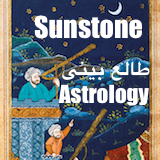Iran International:
Mohammad Ghaedi
Existing narratives competing to shape Iran’s future after the war with Israel offer little clarity, calling for a sober reassessment that confronts the questions of power, leadership and a potential transition from the Islamic Republic.
Following the recent twelve-day war with Israel, many Iranians are asking: What truly happened? Where do we stand now? And what is the realistic path forward?
Prevailing narratives misdiagnose the crisis. They fall into three categories:
The government’s narrative casts Iran as victorious. Yet the facts suggest otherwise.
Iran suffered serious losses: senior military figures were killed, defense systems degraded, and critical parts of its nuclear and missile infrastructure were hit. In return, Iran’s retaliatory strikes did not shift the balance.
Misrepresenting this as triumph only reinforces poor decisions.
Regime-change advocates imagine foreign military pressure will fracture Iran’s security apparatus and cause collapse. But this view underestimates the cohesion of Iran’s coercive institutions and the self-interest of foreign powers, who are unlikely to commit to regime change.
The assumption that mass defections would yield democratic transition lacks grounding.
Structuralist perspectives also misplace blame.
One variant cites imperialism and calls for confrontation with the West. Another urges nuclear armament to balance power. But both ignore domestic dysfunction and corruption, and the risks of pursuing nuclear weapons now.
National strength requires more than deterrence—it needs capable, legitimate governance.
Go to link










Comments